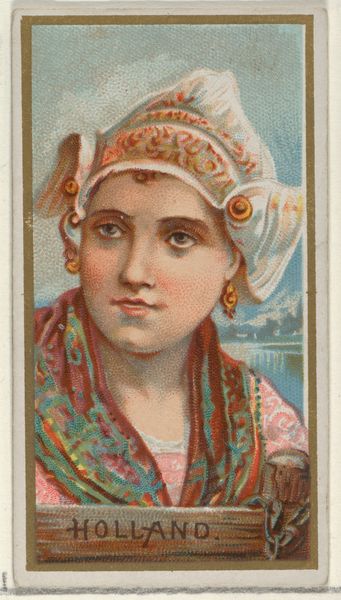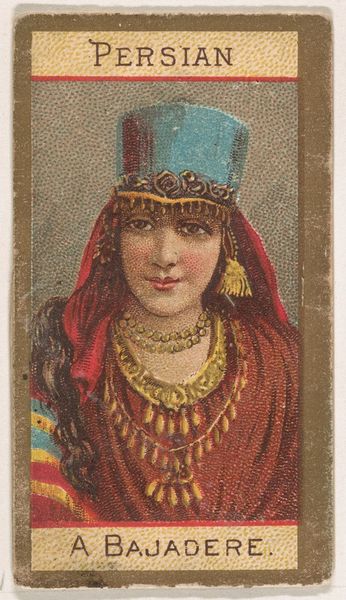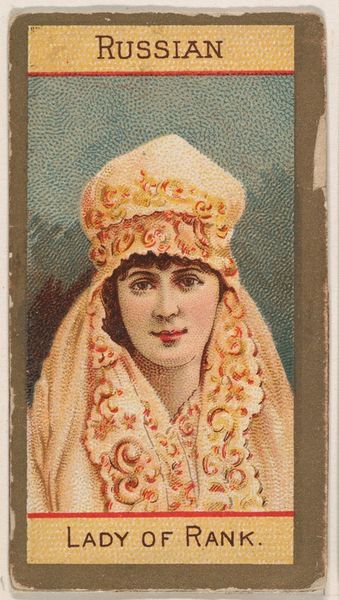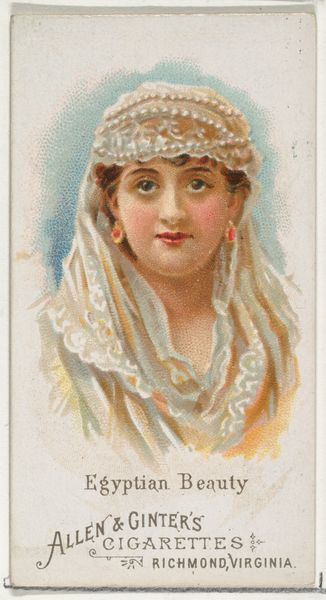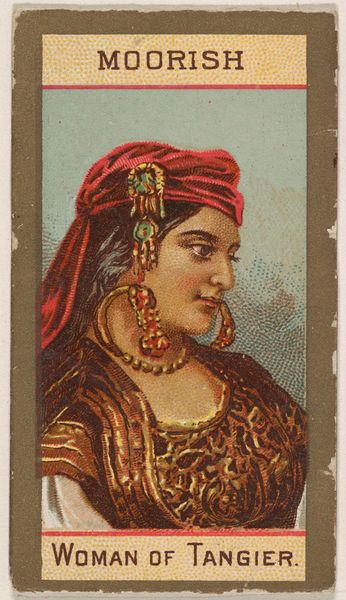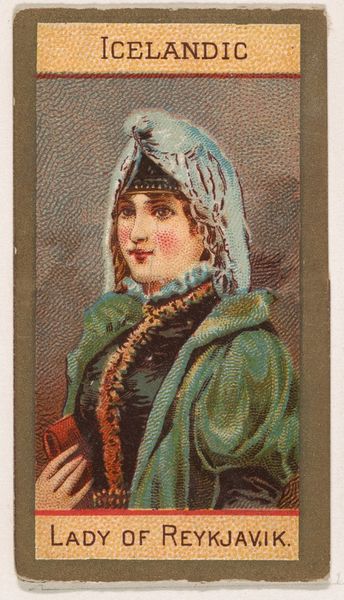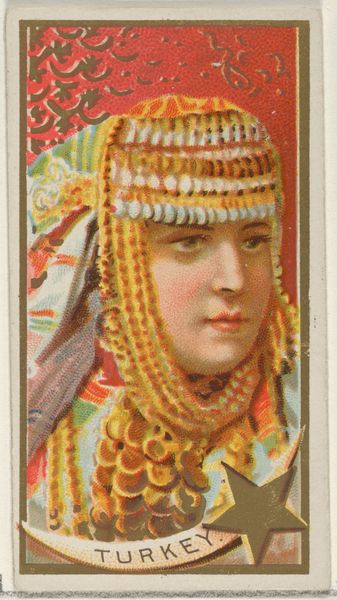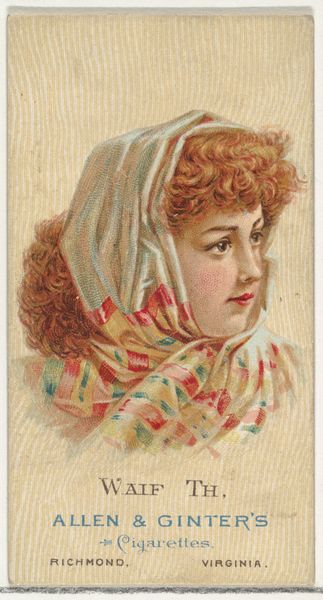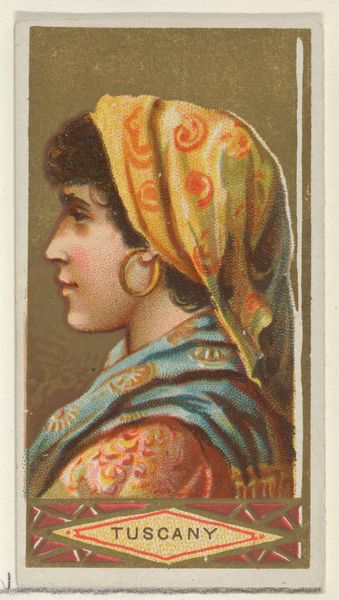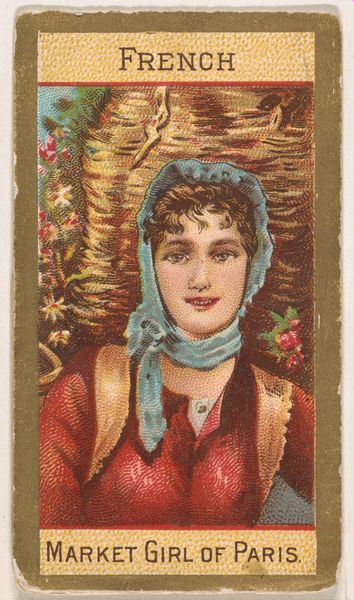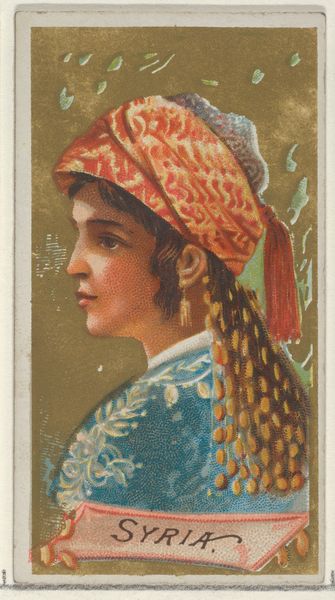
Greecian, A Maid of Athens, from Types of Nationalities (N240) issued by Kinney Bros. 1890
0:00
0:00
drawing, coloured-pencil, print
#
portrait
#
drawing
#
coloured-pencil
#
water colours
# print
#
figuration
#
coloured pencil
#
orientalism
#
watercolor
Dimensions: Sheet (Folded): 2 11/16 × 1 7/16 in. (6.8 × 3.7 cm) Sheet (Unfolded): 6 7/8 × 1 7/16 in. (17.4 × 3.7 cm)
Copyright: Public Domain
Curator: The work before us is titled "Greecian, A Maid of Athens," a color print from the "Types of Nationalities" series (N240), created around 1890 by Kinney Bros. Tobacco Company. Editor: It's rather quaint, almost like a painted doll. I'm struck by the sheer artificiality of it – the flattened perspective and how heavily stylized the features are. Curator: It's interesting to consider what symbols a 19th-century American audience would have associated with ancient Greece. This image taps into an orientalist perspective – filtering Hellenic culture through a lens of romantic exoticism. Editor: The color palette strikes me first—those muted, earthy tones contrasted with that rather bright turquoise headscarf. And look at the pattern on the garment she wears, seemingly a rudimentary rendering with flat colour. How do you suppose they created it, chromolithography maybe? Curator: Most likely. Mass-produced chromolithographs like these distributed with tobacco products provided glimpses of global culture. The very inclusion of “Greecian” among “types of nationalities” reflects a taxonomy popular at the time, attempting to categorize humanity visually. We must note it as a Western gaze looking at otherness through the idea of an aesthetic standard. The image, intended to evoke the Classical, perhaps ends up revealing more about Victorian-era perception than actual Athenian life. Editor: Precisely! This "Maid" is more a commodity than a cultural icon, presented to boost sales in an industrial economy. The details almost don’t matter, do they? Her clothes seem to suggest a craftwork or laboriousness that, in its way, would seem authentic even though it's just the representation. I also wonder about labor practices: was Kinney employing female laborers for these small works, one wonders, given how gendered tobacco consumption was at the time? Curator: The enduring power of classical iconography. And here, recast through an orientalizing perspective to fuel a globalizing marketplace. Editor: Absolutely! What initially seems like a simple portrait reveals a complex web of industrial processes, social dynamics, and even global perspectives on female figures.
Comments
No comments
Be the first to comment and join the conversation on the ultimate creative platform.
